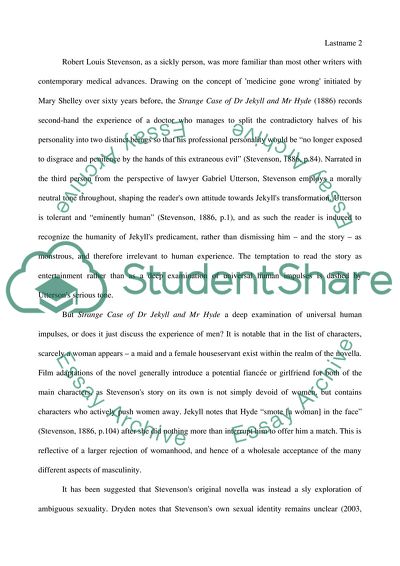Cite this document
(The Victorian Fear of Degeneration in Literature Essay, n.d.)
The Victorian Fear of Degeneration in Literature Essay. https://studentshare.org/literature/1751500-1in-a-cultural-context-obsessed-by-fears-of-decadence-and-degeneration-human-corruption-and-depravity-the-regression-to-savage-or-bestial-states-is-a-matter-of-abhorrence-fred-botting-in-the-light-of-this-remark-consider-the-victorian-fear
The Victorian Fear of Degeneration in Literature Essay. https://studentshare.org/literature/1751500-1in-a-cultural-context-obsessed-by-fears-of-decadence-and-degeneration-human-corruption-and-depravity-the-regression-to-savage-or-bestial-states-is-a-matter-of-abhorrence-fred-botting-in-the-light-of-this-remark-consider-the-victorian-fear
(The Victorian Fear of Degeneration in Literature Essay)
The Victorian Fear of Degeneration in Literature Essay. https://studentshare.org/literature/1751500-1in-a-cultural-context-obsessed-by-fears-of-decadence-and-degeneration-human-corruption-and-depravity-the-regression-to-savage-or-bestial-states-is-a-matter-of-abhorrence-fred-botting-in-the-light-of-this-remark-consider-the-victorian-fear.
The Victorian Fear of Degeneration in Literature Essay. https://studentshare.org/literature/1751500-1in-a-cultural-context-obsessed-by-fears-of-decadence-and-degeneration-human-corruption-and-depravity-the-regression-to-savage-or-bestial-states-is-a-matter-of-abhorrence-fred-botting-in-the-light-of-this-remark-consider-the-victorian-fear.
“The Victorian Fear of Degeneration in Literature Essay”. https://studentshare.org/literature/1751500-1in-a-cultural-context-obsessed-by-fears-of-decadence-and-degeneration-human-corruption-and-depravity-the-regression-to-savage-or-bestial-states-is-a-matter-of-abhorrence-fred-botting-in-the-light-of-this-remark-consider-the-victorian-fear.


